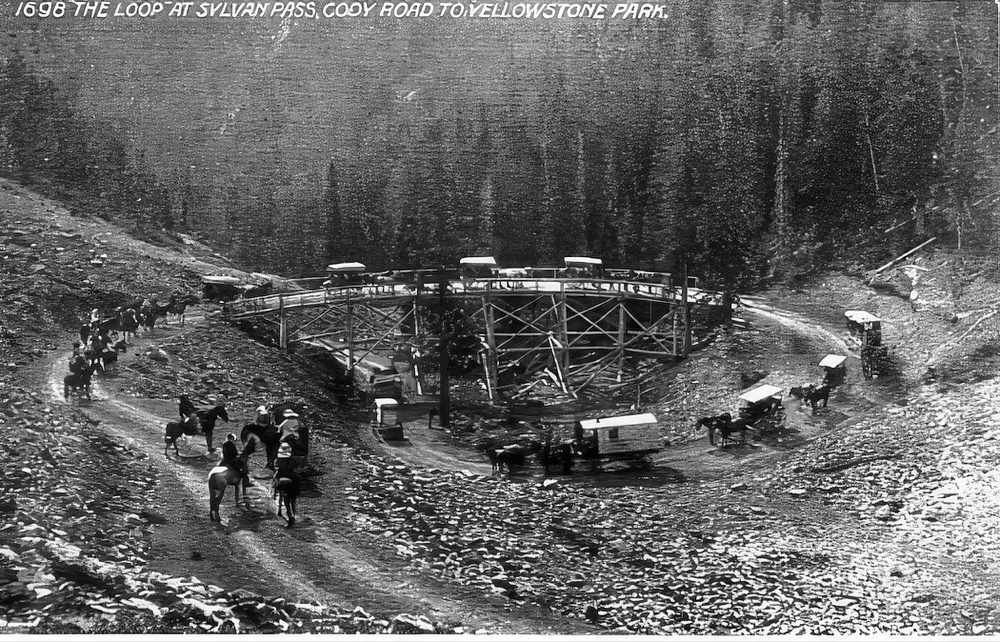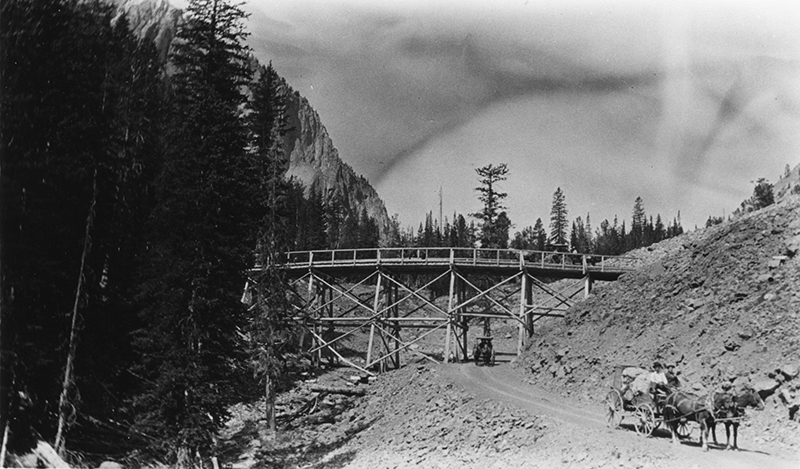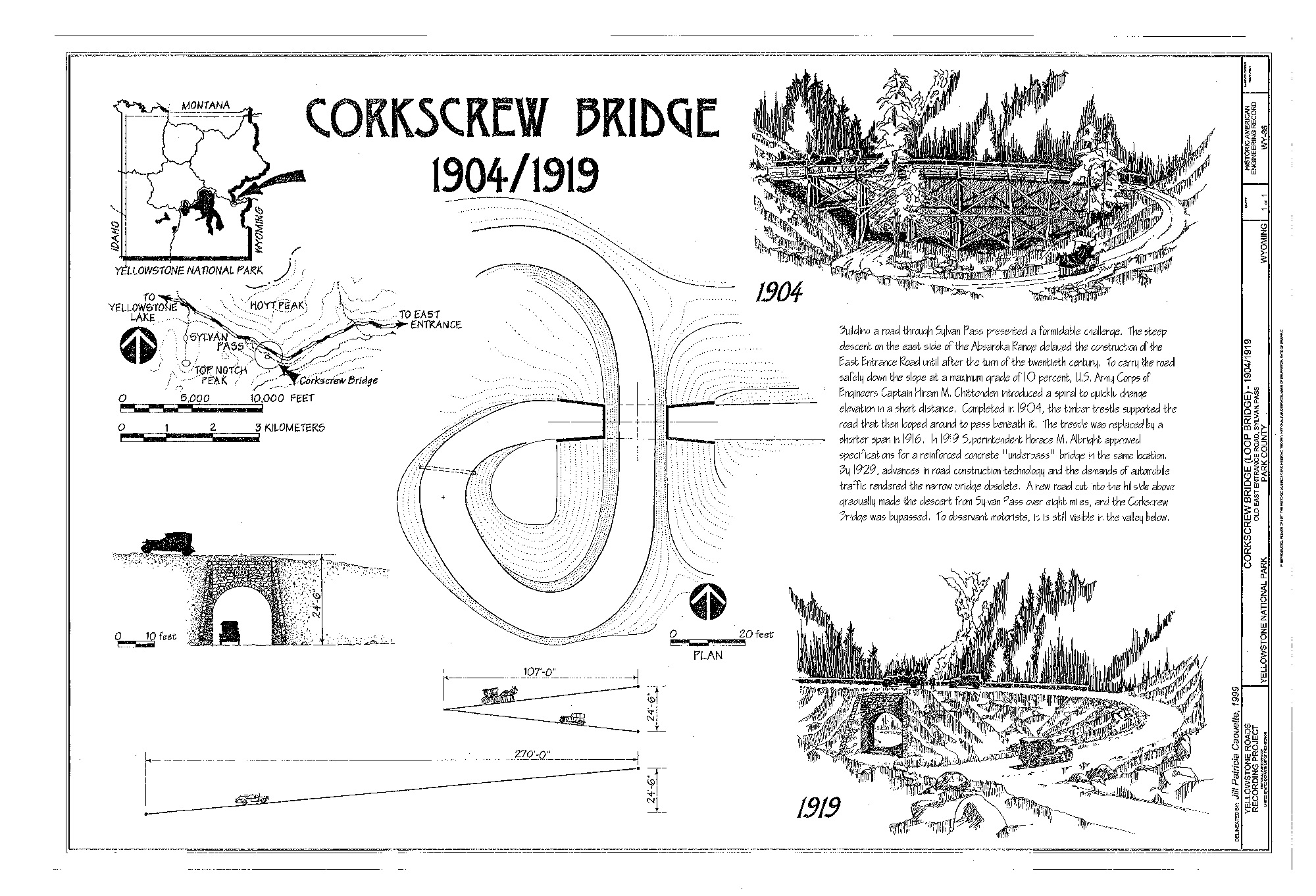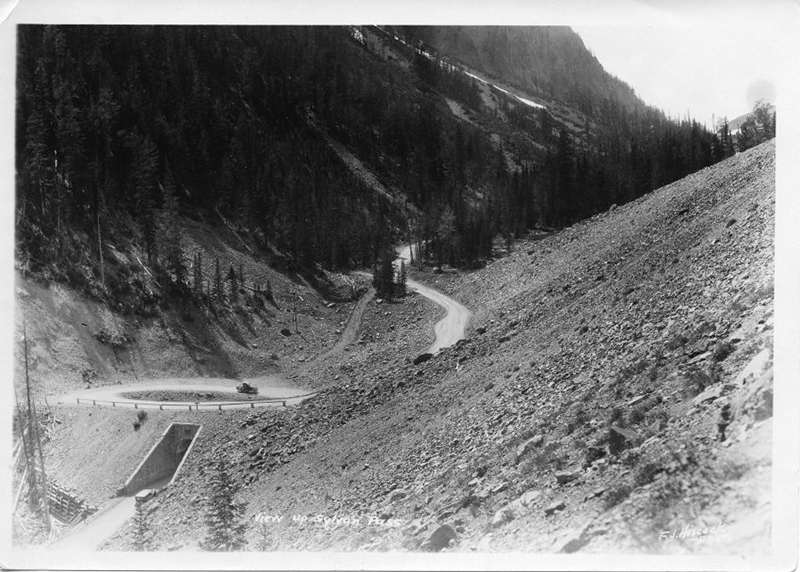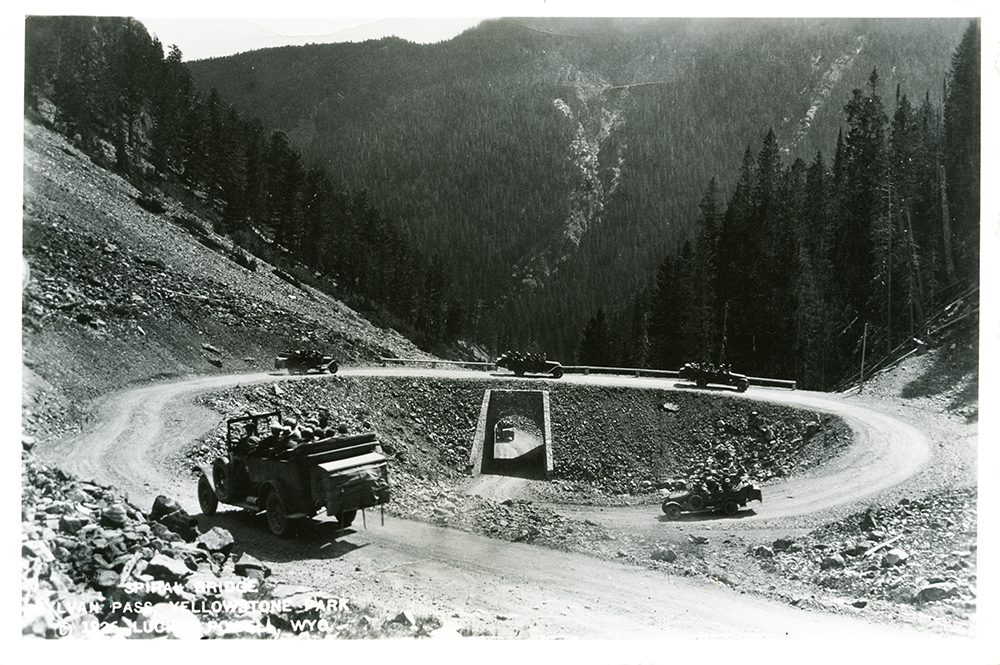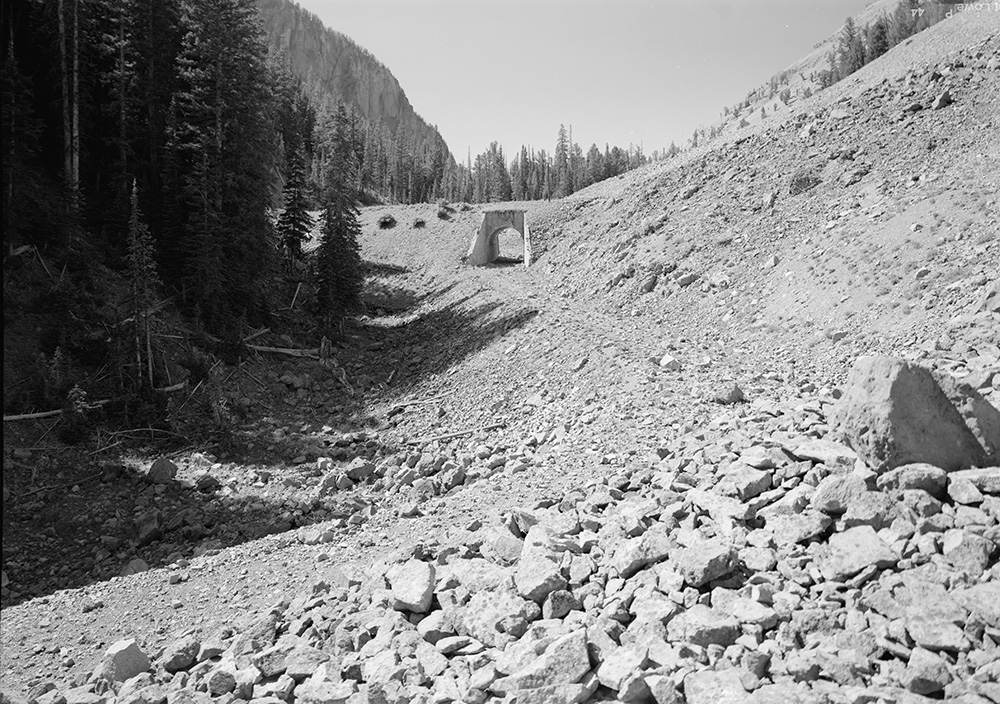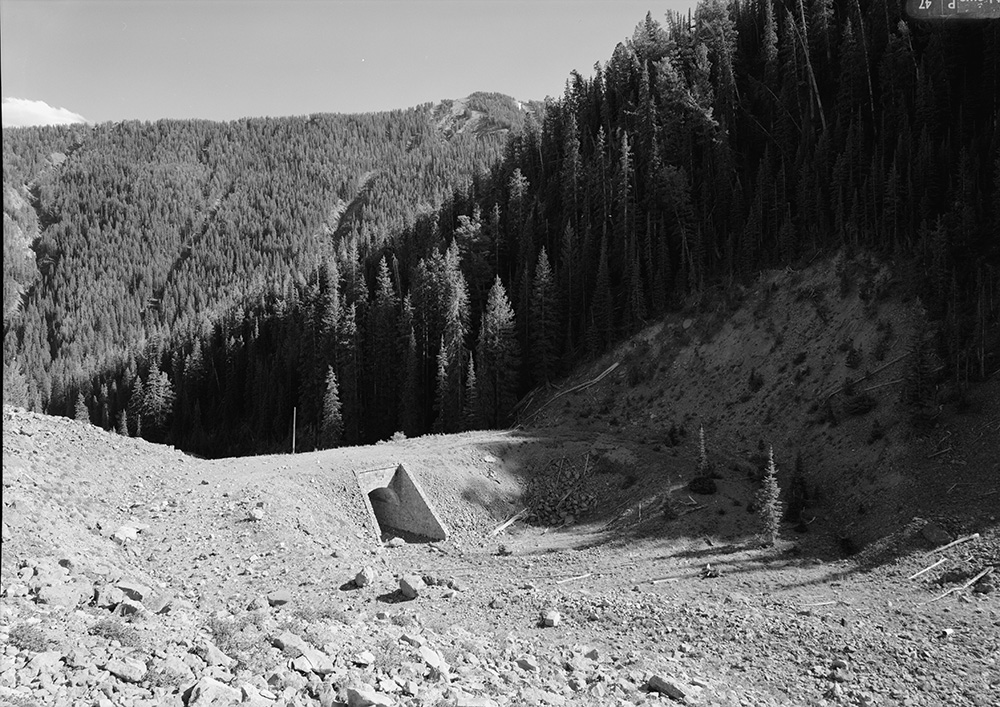The Corkscrew Bridge: Yellowstone’s Twisting Road from the Past
Traveling up Sylvan Pass along the East Entrance road in Yellowstone, there’s a pullout for the Corkscrew Bridge that has an interesting history. The pullout overlooks the location of the old East Entrance road, which was used from 1903 through 1929, when the road was moved to its current location.
The original construction of the Cody road to Yellowstone created a fourth major access road to the park. It was built under the direction of Capt. Hiram Chittenden. Sylvan Pass was chosen over nearby Jones Pass because of its beauty and because it would allow the road to pass by Sylvan Lake, a picturesque mountain lake. Chittenden said in his 1901 report, “This place is one of scenic attractions unsurpassed in any part of the mountains. Sylvan Lake is a small but exceedingly beautiful sheet of water near the summit of the pass, which is about 2 miles farther east.”
Construction presented many challenges, with one particularly steep spot had a 16 percent grade on Sylvan Pass requiring a unique solution.
Gallery of Images:
Click or swipe to see all the images in the gallery. Images courtesy of the Park County Archives and the Library of Congress.
The Corkscrew Bridge
The corkscrew bridge was also called the Loop Bridge, the Under-Pass Bridge, and the Spiral Bridge. The spiral’s purpose was to rapidly descend from Sylvan Pass over a relatively short distance and keep the road grade at or below 10 percent. This would help make travel much safer in stagecoaches and easier on the horses.
The first wooden trestle loop bridge was built in 1905 and used for ten years before the Corps of Engineers recommended replacing it. This was most likely due to the introduction of automobiles in Yellowstone in August 1915. The updated construction showed it was partially earth-filled and shorter than the 60′ wooden trestle.
The road was deep in the ravine where snow was a problem in spring. In 1918, snow melted late in the spring, and the first automobile travelers entered on July 2 but “had to be dragged across two huge snowbanks in Sylvan Pass with ropes.” The road wasn’t entirely safe for travel until July 13 that year.
A third rendition of the Corkscrew Bridge began in July 1919 and finished in July 1920. Date stones above the arch on either end of the tunnel read “N.P.S. 1919.” They were left as the work had been funded under the 1919 appropriation.
The increasing speed of travel rendered the Corkscrew Bridge obsolete. The original design was for the slower pace of stagecoach traffic, and the curves were considered too dangerous for automobiles.
Surveys of the road were done in 1926 and 1927, and rather than add more Corkscrew bridges or sharp switchbacks, it was decided to move the road up to the south-facing slope. This would allow for a gentle grade throughout and snow would not be as significant of a problem. Construction on this new “upper line” was completed by 1929, and is where the road is now today.
The Corkscrew Bridge Today
The pullout on the East Entrance road just east of the summit of Sylvan Pass affords a view of what remains of the corkscrew bridge. If you are interested in hiking down to the structure, you will need to park up at the top of the pass and hike down to it along the old road.
[Images courtesy of the Park County Archives and the Library of Congress]

Janet Jones
Owner, Publisher, Editor
Janet has a rich history in Cody with her grandparents moving here in the late 1930s. Her grandfather started Wyoming Well Service. Janet is a writer, photographer, graphic designer and webmaster. Cody Journal and Cody Calendar blends her skills and talents with her love of the area.

